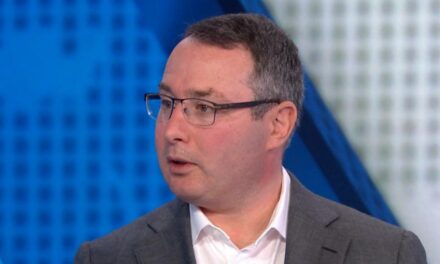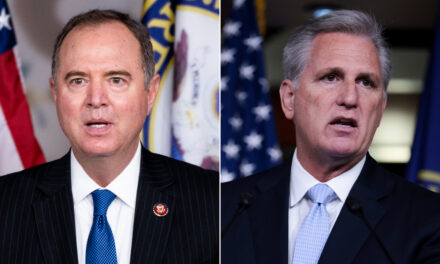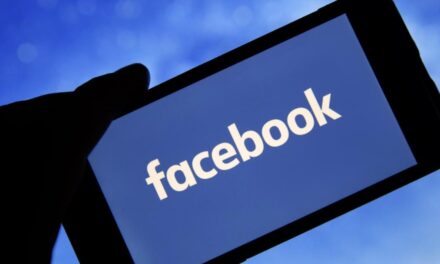
What data journalists say about the election models giving Trump slim chance of winning

A serious slice of the country is still scarred from 2016 when Donald Trump defied the odds and defeated Hillary Clinton. Four years later, that political upset has led many Americans to be skeptical of current models showing Trump, once again, having a slim chance of emerging victorious against Joe Biden. Everyone has heard some version of this from voters on the ground, family on the phone, or friends in a group chat. “Yeah, the experts say Trump has a small chance of beating Biden, but the experts also said the same thing in 2016, and they were wrong.”
To be clear, the models never said it was impossible for Trump to lose in 2016. FiveThirtyEight gave Trump a 28.6% chance, for example, and The Upshot gave him a 15% chance. But many were left with the strong impression that Clinton had the race locked down. When things went sideways for her, it led to a distrust of polling and the data journalists who use such polls to forecast predictions.
This year, the models are once again spelling bad news for Trump. FiveThirtyEight puts his odds at about 11%. The Economist puts his chances even lower at 4%. And while these models put Trump in a much tougher spot than back in 2016, they still do leave open the chance that Trump could win re-election. So what if Trump does win? What if we occupy the universe which gives him either an 11% or 4% chance of emerging victorious? What will that mean for the credibility of data journalists and their forecasting models?
I phoned The Economist’s G. Elliott Morris to hear his thoughts. Is he worried about what might happen next week if Trump manages to win against all odds? “That’s something I think about a lot,” Morris told me. “If we are wrong this time, the perception that polls are unfixable or our analyses are crap would be quite damaging. I’m concerned about that.” Morris is of the mindset that what happened in 2016 was “more of a perceived error than an actual one,” noting that the models did allow for a Trump victory. And he’s confident in The Economist’s model.
But Morris also pointed out that there are things that modeling does not take into account. He said, for instance, that a significant number of ballots could not be counted in Wisconsin due to the Supreme Court’s recent decision. “That’s not something our models take into account,” Morris said.
“I can’t do anything about the election outcome”
I also reached out to FiveThirtyEight’s Nate Silver who also stressed that in 2016 he and his colleagues did say Trump had a chance of winning. “We warned folks that Trump could win and a lot of people didn’t heed that warning,” Silver said. Regarding this year’s modeling, he explained, “We’re not going out on any sort of limb here. We’re just stating the obvious. Biden’s pretty far ahead in polls and the candidate who’s ahead in polls by a margin like that usually wins.”
Asked if he is worried people might be hesitant to trust models like his in the future if Trump does win, which his model again allows for, Silver replied, “I don’t really give a s**t because I can’t do anything about the election outcome. Obviously I can predict that some people might get disillusioned, etc. But it’s not something within my control.” Silver added, “So if the 10% chance comes though … that’s going to happen every once in a while. It’s supposed to happen! And there’s not much we can do about it.”
Enten’s POV
CNN’s Harry Enten emails: “I still think the model at my former place of business (FiveThirtyEight) adequately gave Trump his due (nearly 30% chance of winning). But I think the models and projections that generally have Biden ahead this year are going to pick the right winner for a few reasons. Biden’s in a better position in the state polling (see his high single digit leads in Michigan and Wisconsin). He’s running ahead by 9 or 10 points nationally, while Clinton’s lead was closer to 3 or 4 points. Finally, pollsters have at least tried to make some adjustments after 2016 (such as weighting by education and will be polling until the last minute in the key battlegrounds).”
>> Enten adds: “Of course, there’s no guarantee of Trump losing. I think the job of data journalism (at least as I see it) is to explain what the chances are. I’ve been very careful to say Trump still has a chance. Sometimes unusual things happen. I honestly don’t see if Biden were to win as a confirmation that the models were right. You really can’t judge that off one or two elections. That said, I know that doesn’t necessarily work in the real world. People will take Trump winning as a sign as the models being wrong. I guess that somewhat worries me, but to be honest there are other things that worry me much more in life.”
Even if the polls are off…
NYT’s Nate Cohn pointed out Wednesday that, even if the polls are as off as they were in 2016, Biden will still win. Cohn wrote that the final polls “are usually more accurate” than those conducted further out from Election Day. “If the polls don’t tighten over the next few days, [Trump] will need the polls to be off by even more than they were four years ago.”
While Cohn was not available for an interview Wednesday, NYT data editor Amanda Cox noted to me that the paper has “invested heavily in conducting polls” this cycle, doing more than 40 state polls. “Our journalism is showing readers both what we know and what we don’t know,” Cox added. “On the election night and until its conclusion, the presentation of results on our website and apps will highlight states where a significant amount of the vote has not yet been counted to convey to readers the degree of uncertainty of a race.”


















